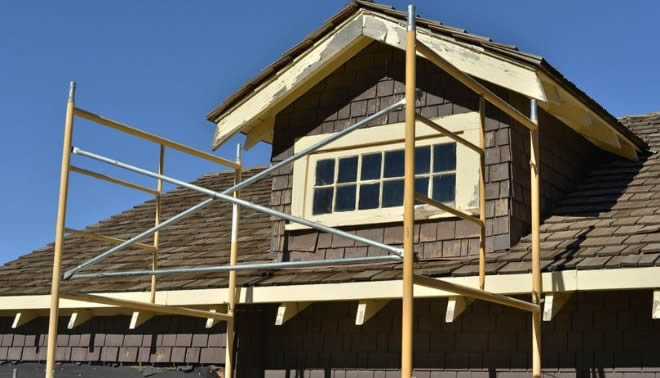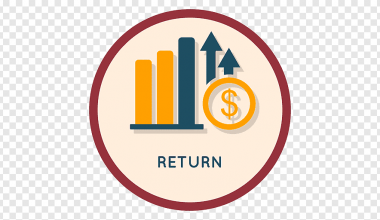Homebuyers often go through a lengthy and costly procedure to purchase a home that needs repairs or renovations. As a result, the provisional assets and rehabilitation loans often come with relatively high-interest rates, short repayment intervals, and a lump sum payment. However, the FHA loan is set to meet a specific and vital demand for homebuyers. Proffering a solution that allows both borrowers and lenders to ensure a single, long-term, fixed, or adjustable-rate loan that covers both the acquisition and rehabilitation loans However, this article will provide you with everything you need to know about 203k FHA loan requirements in 2023.
What Is the 203K Loan?
The Section 203k program is the FHA’s primary program for single-family property rehabilitation and repair. As such, it is a vital tool for rehabilitating communities and neighborhoods as well as expanding homeownership choices. A 203k rehab loan is a type of house financing or refinancing that allows property buyers and homeowners to combine real estate costs and renovation costs into a single loan. In essence, it allows home buyers who are considering purchasing a property that will need a variety of repairs and extensive rehabilitation work to combine the cost of the property and these projects into a single home loan.
However, for residential properties, you can use a single loan with FHA-certified contractors to complete the repairs and modifications. Take note that a traditional mortgage may be a preferable loan option for homeowners who want to undertake more costly home improvements.
How Much Can You Borrow on a 203K Loan?
The most you can borrow is 110% of the home’s future value times 97.75%.
How Does an FHA 203K Loan Work?
The Federal Housing Administration backs the FHA 203 (k) loan. Cash receipts that come through a rehab loan, which can take the form of a 15- or 30-year fixed-rate mortgage or an adjustable-rate mortgage (ARM), can be put toward material and labor charges. The expenses associated with home improvement and repair activities add up to the total that you choose to borrow. Furthermore, rehab financing options can be a premium solution to finance many home modifications (especially large home improvements). You’ll need to qualify for one, just like any other mortgage, with monthly income, credit history, credit score, debt-to-income ratio, and other variables. When you start the FHA 203k loan process, you should expect a lot of documentation and a longer timeline.
Here Are Some Fundamental Actions You Can Anticipate:
- Before you start looking for a home, contact any FHA lenders about your FHA 203k financing choices.
- Find the house and reach an agreement with the seller.
- A 203k repair expert must meet with the client. This person will assist you through the procedure.
- Determine which FHA-approved repairs or remodeling are essential. The loan might help to repair the home or completely renovate it.
- You can contact an FHA contractor for a meeting and price quotes.
- Fill out all of the necessary paperwork.
- At this point, the loan, the contractor, and the renovation plan have all been approved. So you close on the loan.
Types of FHA 203k Loans
The following are types of FHA 203k loans.
#1. Streamline 203(k) Loan
The Streamline 203k version is the most common and is ideal for modest remodeling or appliance replacement. The streamline 203k loan, also known as a limited loan, is used for homes that require fewer renovations. It allows prospective homebuyers or homeowners to spend up to $35,000 on upgrades. There is no minimum cost requirement, and applications may be easier to execute due to the lower amounts they borrow under the rules of this sort of loan.
#2. Standard 203k Loan
The 203k Standard provides for repairs that can involve major structural changes and repairs. A standard 203k loan, on the other hand, covers larger jobs and substantial structural repairs that exceed $35,000. At least $5,000 and a consultant from the US Department of Housing and Urban Development (HUD) must monitor the project and renovation process to ensure conformity with government codes, specific regulations, and guidelines.
What Is the Purpose of the FHA Loan, and Who Is It For?
If you have good credit and at least 20% to put down, an FHA loan may not be the best option for you. However, if your credit score is low, you have little money for a down payment, and you’ll have a lot of debt, you should reconsider an FHA loan.
- Individual FHA 203k loans are suitable for individuals that meet these requirements.
- Homebuyers with a minimal down payment
- Borrowers with a low credit score
- Borrowers with a high debt-to-income ratio who are unable to obtain a traditional loan
- Homebuyers who wish to borrow money to buy a house and make repairs
Is It Hard to Get a FHA 203K Loan?
If your credit score is at least 580, you’ll need a down payment of 3.5% of the home’s purchase price plus repair costs. If your score is between 500 and 579, you’ll need a 10% down payment.
What Are the Two Types of 203K Loans?
The 203k is available in two models: Standard and Limited. (The FHA 203k Streamline was previously known as the Limited 203k.) The FHA 203k loan is available to house owners, local governments, and other eligible non-profits.
The Benefits of a 203k Loan
To determine whether an FHA 203k loan is best for you, you must balance the pros and cons of this loan type.
Benefits of FHA 203(k) Loans
- Lower credit score and prepayment requirements
- provision of temporary housing during the restoration of a home.
- Interest rates are comparable to other loan options.
- The ability to combine the purchase of a home with repairs into a single loan
- Minimum credit score and low down payment
The Drawbacks of FHA 203k Loans
- A one-time mortgage insurance premium is payable.
- The application process can be time-consuming and paperwork-intensive.
- FHA 203(k) loans are not available for investment properties.
- Mortgage insurance is mandatory every month.
- Projects may necessitate the hiring and collaboration of a HUD consultant.
- Closing fees connected with FHA 203k loans may be comparable to those associated with other types of mortgages and refinancing.
These costs cover standard fees such as appraisals, inspections, lender origination, title search and insurance, credit reports, and property surveys However, some lenders may charge additional fees for extending these loan packages.
Can You Get Cash Out on a 203K Loan?
A 203k refinance may not result in any cash payments to the borrower. All money must be directed to the contractor performing the renovation as well as the current lender in order to pay off the existing mortgage.
2022 Fha 203K Loan Requirements
These are some basic and topline requirements for the FHA 203k renovation loan in 2022:
To qualify for an FHA 203k rehabilitation loan in 2022, property purchasers or homeowners must meet some basic requirements. These requirements are equivalent to those of a standard FHA loan. Among them are the following:
- To apply for an FHA 203k loan, you must work with an FHA-approved lender.
- Lenders demand applicants have at least a 500 credit score.
- An FHA 203(k) loan requires a 3.5 percent down payment for people with a credit score of 580 or higher and a 10% down payment for those with a lower score.
- Lenders calculate your debt-to-income ratios, which should not surpass 31 percent on the front end and 43 percent on the back end. Depending on the lender’s policies, you may be eligible to get a little higher DTI if you have a higher credit score.
- If the property will be the borrower’s principal residence, then they can use the 203k loan.
- The contractor must complete the repairs and renovations, not the borrowers.
Eligible Activities
For example, a home that has been demolished or will be razed as part of rehabilitation is eligible, provided that the existing foundation system is retained. 203k insured loans can be used to fund the rehabilitation of the residential section of a property that also includes non-residential uses, as well as the conversion of any sized property to a one-to-four-unit structure. However, borrowers who use Section 203k financing can make the following improvements:
- Structural changes and reconstruction
- modernization and adjustments to the operation of the residence.
- It removes health and safety risks.
- Adjustments that improve aesthetics while removing obsolescence.
- Plumbing repair or replacement; installation of a well and/or septic system.
- removing or adding roofing, gutters, and downspouts.
- Changing or installing flooring and/or floor treatments
- Substantial landscaping and site upgrades.
- Improving a disabled person’s accessibility
- making advances in energy conservation.
HUD mandates that properties financed through this program meet basic energy efficiency and structural requirements.
FHA 203(k) Lenders
Not all mortgage lenders make 203k loans, and not every loan officer or mortgage broker is familiar with the procedure.
You should ensure that the organization you work with is authorized to make this loan and has a large volume of them. The U.S. Department of Housing and Urban Development (HUD) has a useful search page where you can see if the lender you want to hire has completed at least one 203k rehab loan in the last 12 months. Simply enter the lender’s name at the top, scroll down, and select the 203k rehabilitation mortgage insurance program.
Mortgage Insurance and 203K Loan Rates
Mortgage rates for FHA 203k loans are slightly higher than for standard FHA loans. You can expect a rate that is 0.75 percent to 1 percent higher than a normal FHA mortgage. 203k rates are still competitive because base FHA rates are among the lowest on the market. You will also need to pay FHA mortgage insurance. This will cost 1.75% of the loan amount as a lump sum on the loan and 0.85% on an annual basis (broken into 12 equal monthly payments). That’s $4,375 upfront and an extra $177 each month on a $250,000 loan.
Can You Add a Room With a 203K Loan?
The limited FHA 203(k) rehabilitation loan is designed for minor renovations and repairs. No structural work is permitted, therefore you cannot remove walls or add rooms.
Conclusion
I hope this article provides you with everything you need to know about 203k FHA loan requirements in 2023.
203K Loan FAQs
Is FHA and FHA 203k the same?
FHA 203(k) loan is similar to FHA because it is designed to finance the restoration or repair of a house that will be the mortgagor’s primary residence.
How long do I have to live in an FHA home before selling?
You must be able to live in an FHA home between 90 and 180 days. Although in actuality, you can sell it whenever you need to.
What is the difference between 203k and 203b?
An FHA 203k loan is meant to help homebuyers who are purchasing a home that requires extensive repairs or changes. An FHA 203b loan, on the other hand, is generally used for ready-to-move-in homes.
What is a 203b loan?
A 203b loan is a mortgage that is guaranteed by the Federal Housing Administration and is obtained through a lender (FHA). The financing allows buyers to refinance or acquire a property with as little as 3.5 percent down.
Related Articles
- What Credit Score Do You Need to Buy a House: Best US Practices in 2022
- How To Buy A House With Bad Credit: Detailed Guide In 2022
- No Down Payment Mortgage: Getting a Mortgage With No Down Payment In 2022
- WORKERS COMPENSATION: Benefits, Process & Claims in the UK
- Minimum Credit Score To Buy A House In 2022
- MORTGAGE RATES FOR INVESTMENT PROPERTY: Current Mortgage Rates for Investment Property
- INVESTMENT BANKERS: What Do Investment Bankers Do?






